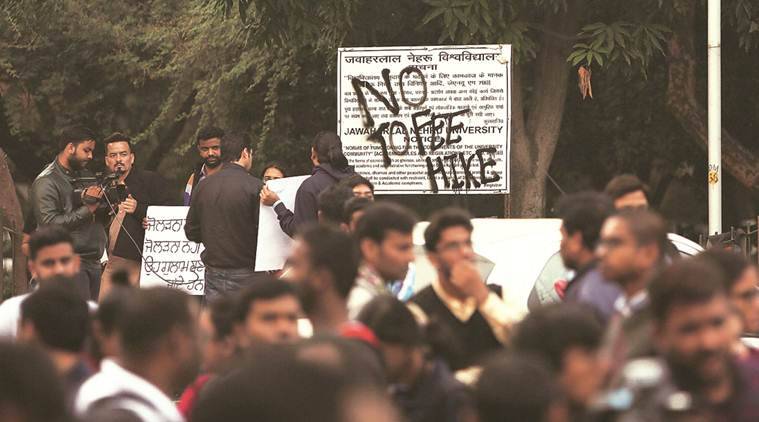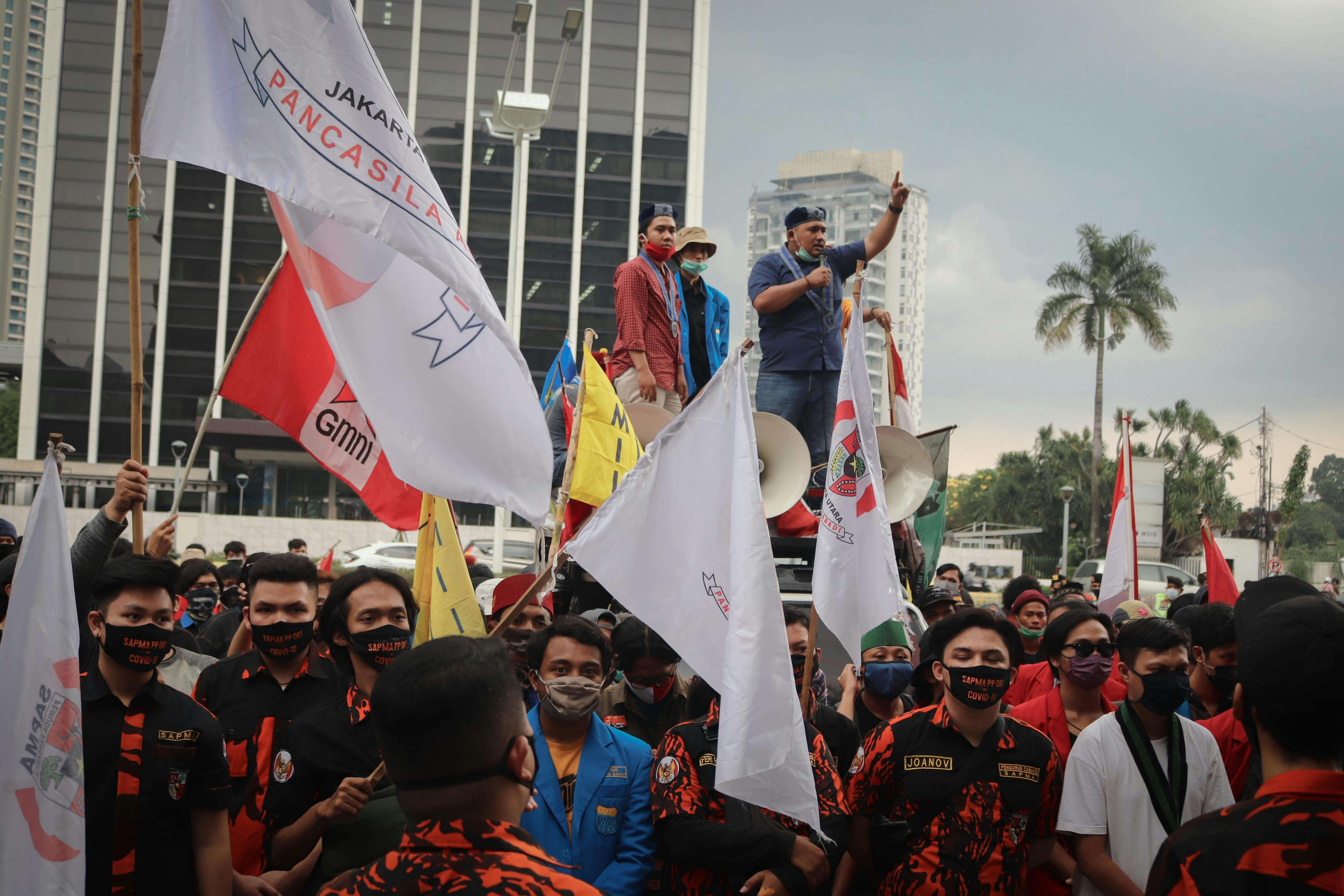Indonesia’s 2025 uprising taps into a long tradition of student activism. Historically, university students played decisive roles in toppling regimes. Notably, mass student protests during the late 1990s helped end Suharto’s three decade long rule and usher in the post-Reformasi era of greater democracy in the nation. Many commentators warn that today’s youths see echoes of the old era returning and that they perceive a “recentralisation” of power and erosion of the post-1998 Reformasi gains under the current leadership.
Spark of Discontent: The Parliamentary Perks Controversy
Firstly, it is important to understand that the violent backlash from youth was not an inevitable starting point of the protests but rather the result of a gradual build-up of mounting tensions fuelled by deep frustrations over systemic inequalities and aggressive government responses.
The main cause for the protests was the approval by Indonesian lawmakers of a drastic increase in monthly housing allowances to over 50 million rupiah (approximately $3,000 USD) per month which was granted to parliament members. This benefit reform was disproportional to Indonesia’s average minimum wage for labourers, which stood at just 3.09 million rupiah in 2025, alienating much of the working population, especially young adults in the lower-middle socio-economic bracket. While the allowance hike ignited the initial spark, deep-seated frustrations had been simmering for months amid similar iniquitous policies such as rising inflation, and corruption under Prabowo’s leadership.
Therefore, on the 25th of August, students, workers, and ride-hailing drivers mobilised peacefully at major political sites, starting with Jakarta’s parliament building and swiftly expanding to other large cities like Surabaya, Medan, and Makassar. The movement united the overlooked demographic of society who had shared demands for economic justice and accountability.
However, the demeanour of these protests changed dramatically on August 28, when a police tactical vehicle violently dispersed crowds in Jakarta and struck and killed Affan Kurniawan, a 21-year-old motorcycle taxi driver and protester. This tragic event marked the movement’s shift from policy reactionism to militant resistance against police brutality and systemic injustice.
From Peaceful Protest to Nationwide Unrest
After Affan Kurniawan's brutal killing, the protests then quickly escalated with demonstrators demanding the reversal of parliamentary benefit increases, improved labor rights, governmental accountability, police reform, and prosecution of corrupt officials.
Between August 29 and 30, protests intensified nationwide. Student and labor groups stormed regional legislative buildings, and government offices and homes of politicians were looted and set ablaze, particularly in cities like Makassar and Surabaya. At least five people died amid fires, clashes with security forces, and stampedes, while dozens more sustained injuries. Police and military forces responded with riot control tactics including tear gas, water cannons, and mass arrests. The unrest caused widespread disruption, including the closure of major roads and public transport stations, significantly impacting daily life.
Government Response: Concessions and Crackdowns
In response to nationwide uproar, President Prabowo Subianto reversed the controversial parliamentary benefit increases and ordered an inquiry into police misconduct. While these measures were welcomed as initial steps by protestors, most protesters were in agreement that they fell short of addressing longer-term demands for systemic reform. However, most student councils agreed to temporarily suspend protests, yet pockets of unrest and dissatisfaction persist across the archipelago.
For context, experts highlight systemic drivers behind the unrest. Indonesia’s current political system rests on a grand elite compromise, a pact of collusive power-sharing. that guaranteed stability but left an “untenable accountability deficit” in which officials act largely unanswerable to voters . In practice, widespread vote-buying and high barriers to entry have hollowed out genuine representation, leaving many citizens disillusioned with formal politics. Analysts argue that with conventional channels blocked, frustrated Indonesians often see mass protests as their only recourse.
This period of unrest dealt a significant blow to Prabowo’s political standing, highlighting the socio-economic inequities within Indonesian society and exposing cracks in the government’s political legitimacy and intentions ahead of the 2025 elections.
The Gerontocracy Dilemma: Disconnect Between Generations
Beyond immediate grievances, these protests underscore a more institutional problem: Indonesia’s growing gerontocracy, where political power is concentrated in the hands of older generations, often detached from the socio-economic aspirations of youth. Despite Indonesians under 30 constituting more than half the population and a significant segment of the electorate, real political influence remains largely monopolised by party elders and long-standing political dynasties.
These youth-led uprising perfectly reflected this, serving as a cautionary tale of the dangers of youth political exclusion and the detriments of leadership styles that prioritise self-interest and preserve dynastic privileges over reform and innovation. The protests serve as a powerful warning that ignoring the voices and needs of Indonesia’s youth risks eroding their democracy , deepening generational divides, and stifling the country’s progress.
In the broader region, similar youth-led movements have emerged. For example, Reuters reports that in 2020–21 thousands of Thai students and young people held unprecedented protests demanding political reforms and openly criticising the monarchy – actions once forbidden in Thailand. These demonstrations called for Prime Minister Prayuth’s resignation and for a new constitution with limits on royal power, reflecting how disaffected youth across Southeast Asia can mobilise when they feel shut out of traditional politics.
What Indonesia’s Future Depends On: Embracing the Young Voices
The protests of August 2025 reveal both the vulnerabilities of Indonesia's political system and the readiness of its youth to mobilize for change, often at great personal risk.
If political leaders continue to marginalize the younger generation instead of engaging with their demands for transparency, accountability, and equitable growth, Indonesia may face recurring cycles of unrest that threaten both social stability and the legitimacy of its democratic institutions.
Ultimately, these events call for meaningful reforms that encourage inclusive governance and respond to the legitimate aspirations of Indonesia’s diverse population. If the nation is to sustain its democratic progress and economic development in the decades to come.





 (15).png)